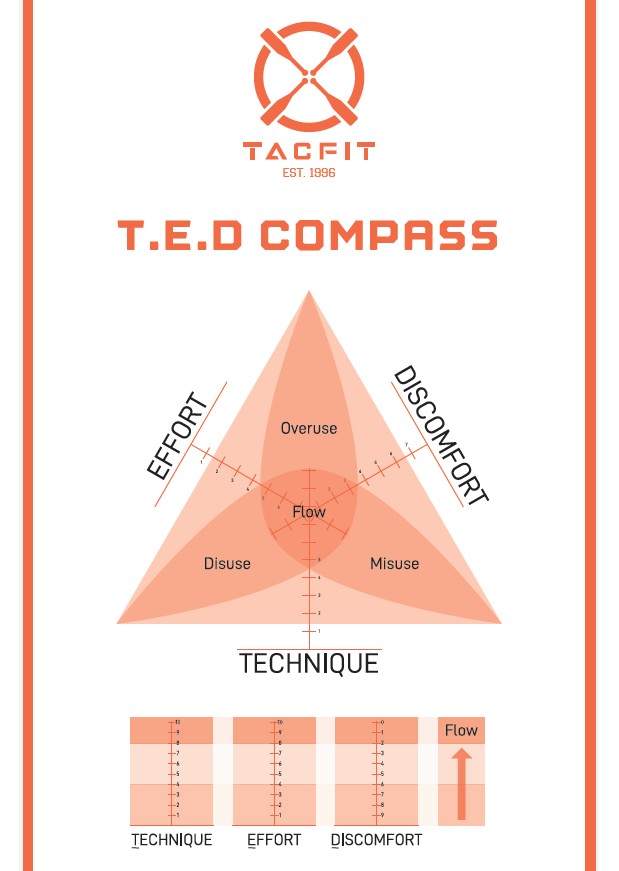Hello Friends,
Can you say with specificity how “much” is “too much” and how “hard” is “too hard”? Unfortunately for our internal experience, exercise doesn’t come in denominations of much and hard. What might be considered a difficult session for a couch potato is a breeze for an elite commando, and what might be a “light” training day for said commando might be hell itself for an average recreational athlete.
It’s all extremely subjective. How, then, do you train yourself to understand your limits and capacities? You do this by journaling your training and by applying your tools. My Intuitive Training Protocol found throughout our programs (can be applied to any physical training) gives you the ability to differentiate form, exertion and discomfort subjectively, and you can then use this as a determinant factor in progressive resistance. By learning to quantify the subjective, you give yourself an immediate sense of where you stand, and you create a very accurate gauge of your progress.
In order to make this tool work for you, you must first learn how to use it. That takes a bit of diligence in the beginning. By journaling your training and by rating these three variables, you will come to a better understanding of your body and you will calibrate your instrument. The skill of rating your performance becomes more finely honed with each use, until eventually you barely have to think about it. But you will have to think about it in the beginning.

These are the three variables you will rate after each training session:
- Rate of Perceived Exertion (RPE): the subjective evaluation of your effort on a scale of 1 to 10, 10 being the hardest you’ve ever worked.
- Rate of Perceived Discomfort (RPD): the subjective evaluation of your pain level on a scale of 1 to 10, 10 being the worst pain you’ve ever experienced.
- Rate of Perceived Technique (RPT): the subjective evaluation of your mechanical performance on a scale of 1 to 10, 10 being the best possible form in that exercise.
If your technique is high enough (greater than or equal to 8) and your discomfort is low enough (less than or equal to 3) you can hold even an exertion level of 10 for as long as your stamina, strength and endurance allow.
As you begin to fatigue and become exhausted, your form begins to fail. Without form, you cannot competently hold the force of your exertion, and as a result, you over-compensate with poor form leading to aches and pains. As these aches and pains go unaddressed, injuries appear. Pouring your effort into your technique, instead of the number of repetitions of weight of the resistance, is what brings you great dividends. With deeper concentration on technique, comes greater physiological benefits.
Poor technique is as trainable as good technique. Every repetition that you repeat with poor technique increases the likelihood that you will embed this. Whatever you repeat, you will adapt to and make more likely, whether you want that result or not.
As a general guideline, when you can sustain an RPT of equal to or greater than 8, an RPD of less than or equal to 3, and an RPE of equal to or greater than 6 over the course of 3 sessions, it’s time to increase a variable: frequency, intensity, speed, density, volume, complexity, etc.
This intuitive training approach and tracking is applicable to all types of training and is not limited to the TACFIT system. Use it anytime you are performing under a physical load, stop counting repetitions, and start valuing the quality of your effort, technique, and discomfort first!
Very Respectfully,
Scott B. Sonnon

Thank you so much for sharing, as a beginner I’m rarely sure about how to address my training and discomfort is scary. I didn’t need more techniques or spreadsheets.